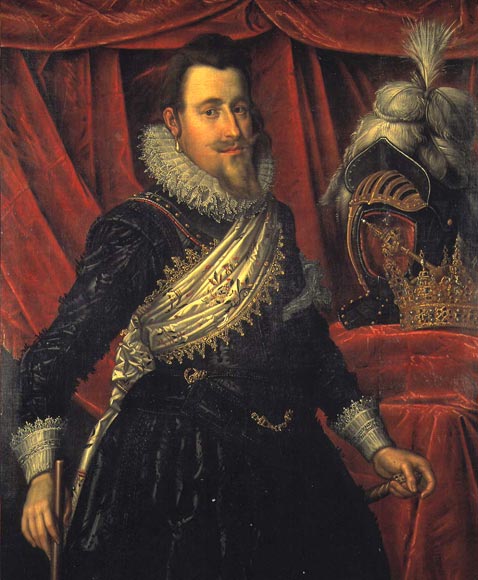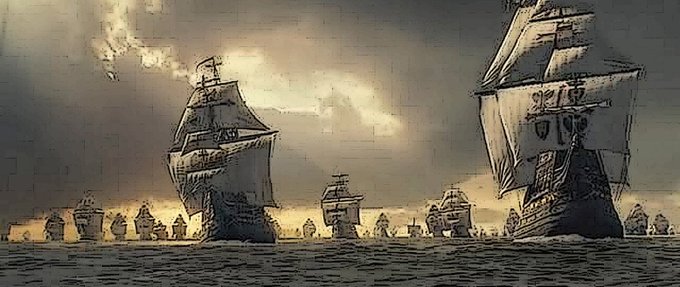Chapter 31: The child-king, Jaime IV of Aragon (1588-1600) -2-

Nimes, October 14, 1598
Chapter 31: The child-king, Jaime IV of Aragon (1588-1600) -2-
Thus, when Jaime IV was crowned in Barcelona (August 29, 1596), he found himself in war with Castile. The war, however, did not last long as Jaime II suddenly died the next year and his son, also called Jaime (III of Castile), was determined to have good relations with Aragon in order to avoid too many fronts open. Thus, the treaty of Valencia ended the Castilian-Aragonese war. Jaime III of Castile had powerful reasons to act like that, as the first signs of a strong demographic crisis began to be noticed in his kingdom. Too many years and too many foolish foreign adventures had begun to take its toll over the population and over the agriculture, as Pedro III and Jaime II had resorted to massive recruitment of his subjects to wage their wars in Portugal and in France, something that had hit hard the Castilian treasury, too, in spite of the Peruvian silver, which, ironically, ended up in Aragonese coffins as payment of the massive loans of the Castilian crown. Jaime III was determined to put an end to this economic chaos. However, the bad harvests of 1602 were to hit hard the already troubled kingdom. In Andalucia, the struggles for the distribution of benefits from the exploitation of the powers of justice exercised by the lords were thankfully over by 1598-1599, at which time Jaime III asserted his authority over the one of his noblemen.
Meawnhile, Henri IV began another campaign aqgainst his Catholic namesake in 1596. In a peculiar turn of events, the German emperor had sent 30,000 men to support the belagered Henri III. Commanded by a trusted General, Camilo Capizucchi, the Imperial forces gathered at Mons, where Henri IV found them with 21,000 of his own. After suffering 12,000 losses (half of them prisoners), Capizucchi withdrew towards Brugge, with Henri IV, who had lost 9,000 men, in hot pursuit. Further troubles came to the Imperial General when half of his army (3,000 infantry and 2,000 horse) became separated of the bulk of the Imperial forces and marched to Liege. Low on food and morale, the Imperial army fortified itself in Brugge. Throughout the summer of 1596, Henri mercilessly hammered with his guns on the walls of Brugge. On August 24, he stormed the city and butchered Capizucchi's men. The Italian, after loosing 4,000 men, ran away with 2,000 infantrymen, 4,000 horse and his last 50 guns, leaving behind 4,000 men who were taken prisoners by Henri IV, whose losses were barely 1,000 men. In three months, the French Huguenot king had crushed an enemy superior force. Shocked at this, Henri III suddenly felt the the need to redeem himself and, at the head of most of the Catholic army and with the bulk of the Catholic nobilty following him, he departed to the Low Countries with 14,000 men (3,000 on horse) and 42 guns. He met Henri IV, who had been reinforced and had then 13,000 men, 3,500 horse and 30 guns, at Cortique on September 20th, and there the last Catholic army ceased to exist and Henri III lost his crown, while his name would live on in history as a synonym for those fighting a lost cause. Barely 2,000 Catholic soldiers managed to flee the battlefield after begin defeated by Henri IV, who captured 12,000 prisioners. The fate of Henri IIi is unknown but his corpse was found at Wervick, 75 kms to the southwest of the battlefield, two weeks later.
Then, it was the turn of Jaime IV of Aragon to receive a lesson about realpolitik.
As peace returned and the unified France settle to recover from so many years of war, James IV took an interest in many and varied matters, including a series of domestic reforms and improving the Aragonese armaments. New fortresses were constructed under the direction of Dutch engineers. The Aragonese navy was to be expanded to sixty ships by 1610 and the army should become a national one, but this was a more difficult task. Then, in early 1598, Sardinia and Sicily rose in revolt. The old complains about being rule by foreigner administrators were again behind this rebelion, and James IV resorted to diplomay and armed strenght to pacify those lands when, unexpectedly too, Henri IV of France meddled on the issue. As the rebellious spirit spread from Palermo to Naples, the Aragoneses were expelled or murdered by angry mobs of peasants and merchants and republics were proclaimed in both states and mutual letters of recognition were sent. Then, on February 13, 1598, France announced his recognition of the rebels and French gold began to arrive to them. It goes without saying that Jaime IV didn’t react well to this. Suddenly, as Rome send harsh words to teh "loyal Catholic French" and the German emperor took the chance to march straight to the North of Italy. However, the Ottomans forced him to cancel his plans and turn to the East.
Then Henri attacked. He sent 8,000 men under the commando of the well meaning but less talented Denis de Tocqueville. he hoped to take the Aragonese by surprise and to captured Girona with a swift strike. However, de Tocqueville was the one surprised when he found his way blocked by 12,000 Aragonese soldiers led by Jaime IV himself. After making short work of de Tocqueville, the Aragonese king marched north. A bewildered de Tocqueville retreated across the border with only a handful of man servants as the bulk of his army laid dead on the field or crowded the dungeons of the castle of Girona. But as if that wasn’t bad enough, Jaime IV appeared in the Béarn and killed and captured the enemy force which had gathered there. All in all, Henri IV of France lost another 7,000 men. Within a few months of 1598, the main part of the Southern French Army had been destroyed in two decisive engagements. The bells in Barcelona and Zaragona rang with joy. Henri hurried with his his army south to save what still could be saved. Only God could tell how he would fare.
By October 1598, Henri stood before the walls of Nimes. Jaime needed to defeat him there to be able to turn against the rebels, as a two war fronts was impossible to be held and even less if one of the enemies was France, no matter how weak it was. In a long battle that lasted for six hours, the whole Aragonese army, 13,000 strong, was annhilated and, a de Tocqueville had done a few months earlier, James IV barely managed to escape with a little group of survivours. Henri IV had lost 5,600 men of his 23,000 original force, but the main Aragonese army was gone. War could not go on after the defeat of Nimes, and Jaime had to accept the fact. By early December 1598 a truce had been agreed on, which stated that each combatant would keep his spoils until the end of the negotiations which were to be held in Lyon. The negotiations were short, cold, hard and full of undeniable facts. Aragon had been defeated and was not able to follow the war as her navy could not reinforce their forces in Italy was their ships ran into the iron ring that was the French blockade. With such cards on the hand, the French delegation quickly forced their demands through; Aragon would cede Nimes, Lodeve, Rouerge and the Quercy to the French crown. Furthermore, Aragon would acknowledge the independence of the Sicilian Republic and of the Sardinian Commonwealth. The treaty was signed on January 6, 1599.
On the following way, Jaime IV began to plot his revenge. He was not aware of that, but he was preparing the road for the biggest transformation of Europe since the fall of the Roman Empire.
Last edited:




